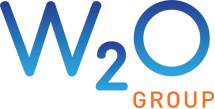W2O Group
Home / W2O Group
W2O Ready to Spread Its Wings with NetSuite as its Growth Platform
When a company grows as fast as W2O Group has, niche accounting software no longer will do. As the integrated marketing firm’s head count swelled from 80 to 425, its organizational complexity also grew, and its previous system couldn’t handle the emerging multi-subsidiary structure. W2O needed a solution that was not only more scalable, adaptable and flexible, but also provided tighter financial controls.

COMPANY
W2O Group
LOCATION
San Francisco, Calif.
INDUSTRY
Advertising / Marketing
REVENUE
$86.4 million (2014)
EMPLOYEES
425
NUMBER OF COUNTRIES
2
SYSTEM REPLACED
Rebus Software’s Paprika
OTHER SOLUTION CONSIDERED
FinancialForce, SAP Business One
NETSUITE PRODUCTS IMPLEMENTED
LEARN HOW CLOUD ERP CAN STREAMLINE YOUR BUSINESS.

"With NetSuite, we are able to see any potential issues ahead of time, which allows us to become very proactive rather than reactive."
- W2O Group
Ready for Rapid Growth
Running at Full Speed
- With its financials, services business and sales operations all running on NetSuite, W2O can spread its wings from startup mode. Employees can drill down to transaction levels in reports, executives can compare margins across W2O’s eight subsidiaries, and project management is more proactive and efficient than ever.
- By automating revenue recognition in NetSuite, W2O has reduced its accounts receivable closing from several months to less than 15 days. Meanwhile, streamlined project management processes have freed staff to devote more time to clients and project execution.
Automation Frees Resources
Poised for Growth
- Having established an office in London, W2O is poised to leverage NetSuite OneWorld’s multi-currency support as it pursues more business overseas. And as the company builds out its digital marketing and analytics operations, it can now easily onboard any future acquisitions.

































